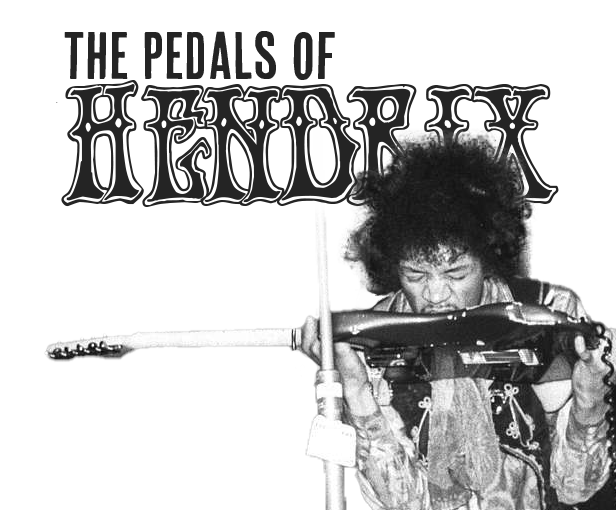
A Brief History
“I had a phone call from the shop to say that someone called Brian Epstein was there with a drummer. Here was this drummer, Ringo, Schmingo, whatever his name was. At that time, I certainly hadn’t heard of the Beatles. Every band was going to be big in those days!” - Ivor Arbiter. In 1961, a young drummer/entrepreneur named Ivor Arbiter opened Drum City in the West End of London. Being the first and only shop specializing in drums at the time, Drum City became the watering hole for all local drummers. In April of 1963, Brian Epstein, manager for the then up-and-coming band the Beatles, took the newest member of the band to shop for a new drum kit to replace his old Premier set. After seeing the swatch for Ludwig’s latest finish, black oyster pearl, Ringo decided against the all-black kit they initially came to buy and landed on the Ludwig Downbeat kit. Epstein and Arbiter went back and forth on the price, and Arbiter ultimately agreed to take Ringo’s old kit in exchange for the new offering from Ludwig. Arbiter’s only stipulation for the deal was that they keep the Ludwig logo on the resonant head of the bass drum to promote his recently acquired drum line. Ringo and Epstein agreed to the terms and asked if they could also get the Beatles’ name on the head. On the back of a pack of cigarettes, Arbiter sketched a logo with a capital “B” and an extended “T.” That design was then printed on the drum head and thus was born (from an off-the-cuff sketch by Arbiter) the “Drop-T” Beatles logo that would stay with them throughout the rest of the band’s life.
A year after opening Drum City, Arbiter opened a guitar and amp shop named Sound City. Just a few months after Ringo acquired his new drum set from Arbiter, George Harrison went shopping for a new guitar at Sound City. Harrison left with a Gretsch Chet Atkins Country Gentleman and, on July 1, 1963, used the guitar to record the highest-selling single of the 1960s, “She Loves You.”
Following the gaining popularity of Gibson’s Maestro FZ-1 Fuzz-Tone fuzz box, the British company Sola Sound created the Tone Bender fuzz. By modifying the FZ-1’s circuit, Gary Hurst made a new fuzz capable of more sustain. Hurst continued to tweak the circuit, and only a few months after the release of the first Tone Bender (now known as MK I), a new iteration of the Tone Bender sporting only two transistors instead of three was in circulation.
This version later became known as MK 1.5. The successor to this version was designated the Tone Bender Professional MK II. The design added a third transistor to the MK 1.5 for added gain and sustain. Arbiter noticed the popularity of fuzz units thanks to The Rolling Stones and decided to get in on the action.

In the fall of 1966, Arbiter released his new fuzz unit, the Fuzz Face. The unique circular shape, potentiometers for eyes, and smiling manufacturer’s logo made the pedal stand out amongst the other rectangular pedals on the market. Electronics engineer Denis Cornell was hired by Arbiter to test the new units. When asked about the aesthetic design of the Fuzz Face, Cornell said, “He used the bottom of a microphone stand to fit the circuit board in, and that is how the round shape came about.”
The Fuzz Face’s circuit is straightforward and consists of only 11 components and a 9-volt battery. So simple that it is a slightly altered version of the MK 1.5 Tone Bender. When asked about the circuit, Roger Mayer said, “The term ‘Fuzz Face’ is really a trade name to describe the enclosure… What is actually inside the enclosure electronically has gone through several evolutions. But, essentially, a transistor is a three-terminal device. There’s not many ways you can connect up three terminals, is there? Most of the elements of the circuit can be seen in any textbook from 1965. They’re all written down. You couldn’t patent it. It’s impossible to patent an obvious way of connecting up two transistors.”
The only differences come from the transistors used, a couple of the capacitor/resistor values, and one of the potentiometer values. Where the Tone Bender used Mullard OC75 transistors, the Fuzz Face used NKT275. Where the Tone Bender used a 100k volume pot, the Fuzz Face used a 470k. This value change of the potentiometer plays a significant role in the tone of each fuzz box due to stray capacitive loading. This leads to the Tone Bender being brighter and tighter (regarding the low end) and the Fuzz Face being warmer and thicker. Another notable difference is the biasing of the germanium transistors. Fuzz Faces were biased around 4.5 volts, where Tone Benders were around 8.5 volts.
This gave the Fuzz Face a smoother, more singing tone and the Tone Bender a more sputtery, gated tone. Despite the similarities between the two pedals, the slight variations between the circuits made for stark tonal differences.
Jimi and the Fuzz Face

Chas Chandler, the bassist for the Animals, decided to leave the band and focus his efforts on record production and artist management. While in New York City in July of 1966, Chandler saw Jimi Hendrix playing at Cafe Wha. That moment changed both of their lives. Chandler convinced Hendrix to go to London, and just as the Arbiter Fuzz Face hits the market, Hendrix arrives. The exact details of how Hendrix acquired his first Fuzz Face are unknown, but the first photograph of Hendrix using it comes from November 8, 1966, while at the Big Apple Club in Munich, Germany. Less than three weeks later, on November 24th , Hendrix used the Fuzz Face for the first time in the studio to record the song “Love and Confusion.” Less than two months later, Hendrix would meet his “secret weapon,” Roger Mayer. Hendrix showed Mayer the new fuzz box and divulged the inconsistencies he noticed from pedal to pedal. Mayer, being an engineer, knew he could improve the design. When asked about the inherent issues with the Fuzz Face, Mayer said, “They weren’t consistent, so when I first heard one, I said to Jimi, ‘Let me take one back to the lab and have a look at it and analyze what’s going on in the circuit.’ It became apparent without very much analysis that it is what one would call a ‘minimum-parts circuit’… In other words, there were a lot of shortcuts taken to minimize the amount of components. It would work, but it didn’t take into account any of the other ‘accepted’ electronic techniques being used. I was working for the government at the time in vibration and acoustic analysis - and the Fuzz Face didn’t take into account any of the pitfalls. So, this very simple circuit: yes, it worked, but maybe only one out of 20 worked well…
The fact of the matter was that not only did you have a circuit that was simple to the point of instability, no provision was made in the early days for the huge variance in performance of the pedal’s components - especially the transistors.” For Hendrix, the Fuzz Face was a permanent fixture in his arsenal. For Mayer, it was his mission to improve the Fuzz Face. From 1967 to 1970, it was almost impossible to tell what modifications Mayer would have done, but we know that from then on, they were nearly all modded to some degree. Mayer said, “Working with Jimi, straight away within two months, I developed my own new fuzz boxes for Jimi that were superior in every way to a Fuzz Face. They weren’t as cheap to make. You couldn’t go and buy 20 of them down the road for £6 each. So, the boxes I made for Jimi, he didn’t want to lose, so we only took out commercial ones on the gigs. Then we didn’t worry if they were stolen. We had 15 or 20 of them, and we used to lose three or four a week!”
Fuzz Face and the Modern Market
“If you start with bad-sounding transistors, nothing can help. Good ones will allow a lot of harmonic content - just scratching the strings can usually tell me if the transistors are worth using or not.” - AnalogMike Piera, Analogman.
The market is flooded with Fuzz Face variants. Replicas, DIY kits, modded versions, etc., exist in spades. In 1993, Jim Dunlop took over Fuzz Faces’s production and produced the vast majority of Fuzz Faces on the market today. They currently offer seven versions of Fuzz Face in the round enclosures and a couple of Fuzz Face variants. JHS, MXR, and Electro Harmonix are the other major producers in this mass-produced market. These fall in the ~$50-200 price range. In the boutique sector, Analogman, Isle of Tone, Dominion Electric Effects, Ivor by Dustin Francis, Dandrive, and Kingtone are a handful of the primary drivers of this niche market. These pedals can vary in price substantially from ~$250-1,500. Finally, the vintage market for Fuzz Faces is wild. Prices can range from ~$3,000-7,000. Currently, on eBay, a Jimi Hendrix-owned and used Dallas-Arbiter Fuzz Face from 1968 is listed at $35,000. The provenance of the Fuzz Face has created a massive market for guitar players that shows no signs
of slowing down.

